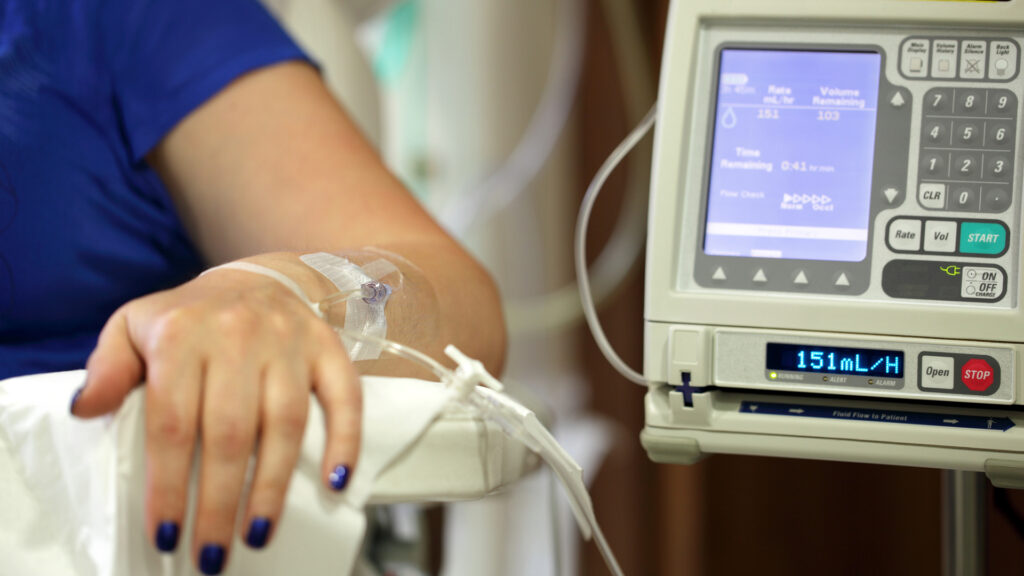For many patients, the thought of surgery or dental work brings one word to mind: fear. IV sedation has long been a tool to calm those fears, keeping patients relaxed and pain-free. But traditional methods of sedation rely heavily on human monitoring and manual adjustments. This opens the door to human error, inconsistent dosing, and missed warning signs. Today, artificial intelligence (AI) and smart infusion pumps are stepping in to change that. By combining technology with medical expertise, the future of sedation could be safer, more precise, and far less stressful for patients.
The Role of IV Sedation in Modern Care
Problem – Anxiety and Pain Limit Patient Access to Care
Many patients avoid important procedures due to fear of pain or the anxiety of being awake. This is especially common in oral surgery, wisdom tooth extraction, and even routine dental treatments. Without proper sedation, care is delayed and conditions often worsen.
Solution – Sedation That Eases Fear and Improves Outcomes
IV sedation helps patients stay calm, reduces memory of procedures, and allows doctors to work more efficiently. By pairing sedation with modern technology, providers can deliver not just comfort, but also consistency and safety at every stage.
Technology Advancements in Sedation Monitoring
Problem – Manual Monitoring May Miss Warning Signs
Traditionally, medical teams track heart rate, oxygen saturation, and blood pressure during sedation. While effective, this method leaves room for human error. Subtle changes in vital signs may go unnoticed in busy clinical environments.
Solution – Digital Sedation Monitors Add Precision
Modern digital monitoring systems provide real-time data tracking. They alert teams instantly if oxygen drops, if heart rate spikes, or if blood pressure falls. By using AI algorithms to predict complications, these tools give providers a head start in preventing emergencies.
Safety and Accuracy Through Smart Pumps
Problem – Dosage Errors Increase Sedation Risks
Delivering too much or too little sedation can be dangerous. Overdosing may suppress breathing, while underdosing causes patients to wake mid-procedure. In manual systems, dosage relies on constant adjustments by staff.
Solution – Smart Infusion Pumps Deliver Precision
Smart pumps calculate exact doses based on patient weight, age, and medical history. They use built-in safeguards to prevent overdosing and maintain steady sedation levels. AI-driven pumps can even adjust flow rates in real time, ensuring patients remain safe and comfortable throughout the procedure.
Improving Patient Experience With Innovation
Problem – Fear Prevents Many From Seeking Care
Anxiety is one of the biggest barriers to medical and dental care. Patients who fear sedation complications or waking up mid-procedure often postpone needed treatments.
Solution – Technology That Builds Trust
When patients hear that AI systems and smart pumps are actively monitoring their safety, trust increases. This reassurance encourages more people to undergo treatments they might otherwise avoid. Better experiences lead to stronger patient satisfaction and improved health outcomes.
Telemedicine and Remote Sedation Oversight
Problem – Access to Sedation Specialists Is Limited
In smaller towns or rural areas, patients may not have easy access to highly trained sedation specialists. This creates barriers to safe and effective care.
Solution – Remote Monitoring Expands Reach
With cloud-connected devices, sedation data can be shared with specialists in real time. This allows remote oversight by experts, ensuring safe sedation even in locations where in-person specialists are scarce.
Future Trends in AI and IV Sedation
Problem – Current Methods Still Depend on Human Guesswork
Even with modern equipment, human judgment remains central to sedation dosing. While expertise is critical, it may not always be enough to predict every patient’s response.
Solution – AI-Assisted Sedation Personalization
The future lies in AI-assisted sedation systems that analyze vast datasets of patient responses. These systems can predict how a patient will react to sedation before the procedure begins. Combined with smart pumps, AI could create fully personalized sedation plans, tailored in real time to each patient’s unique physiology.
The Bigger Picture: Technology as a Safety Net
Problem – Traditional Sedation Relies Too Heavily on Human Oversight
While skilled, human teams can be stretched thin. In high-volume clinics, close monitoring for every second of a procedure is challenging.
Solution – Technology Scales and Supports Human Expertise
AI and smart pumps don’t replace medical professionals—they empower them. By handling routine monitoring and adjustments, technology frees providers to focus on patient comfort and clinical care. The result is a balance of human judgment with machine precision.
Conclusion
The future of IV sedation is being reshaped by technology. From AI-driven monitoring to smart infusion pumps, the tools now available make sedation safer, more accurate, and less stressful for patients. These innovations reduce the risks of dosage errors, improve real-time monitoring, and even open the door to personalized sedation strategies.
For patients, this means fewer fears and smoother recoveries. For providers, it means efficiency and peace of mind. Could AI and smart pumps truly revolutionize sedation? The evidence suggests they already are—and the best is yet to come.






